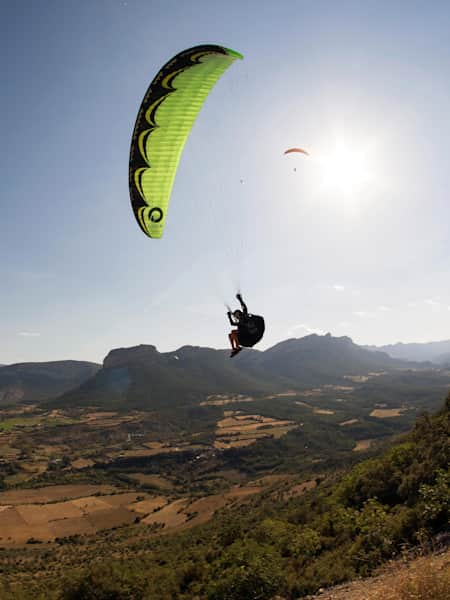Meet Jack Pimblett, a 17-year-old who's already reached dizzying heights in the world of paragliding. The teen adventurer from northwest England first strapped on a harness at the tender age of two, when he joined his father on a tandem flight.
Pimblett was sucked into the sport from that very first experience, joining his father on almost every flight before making the switch from passenger to pilot. Now he performs an impressive array of aerial tricks, including Infinity Tumbling, where the pilot makes consistently vertical passes over the canopy.
Here Pimblett offers his five top paragliding tips for anyone starting out:
1. Book a tandem flight
You may like the look of paragliding, but being up in the air in the hot seat will be a very different experience. Book a tandem flight, where a professional will show you what it's like to fly with the birds minus the added stress of controlling the giant banana-shaped piece of fabric above your head.
2. Sign up for a course
If the vertigo didn't get to you during your tandem flight, you may want to take the experience further and become a pilot. To do this you'll need to book a course with certified professionals, who'll take you from soulless ground dweller to sky god in no time. Paragliding can be quite expensive in the early stages, but once you're setup with a licence and equipment, there's only the cost of getting to the spots where you can fly.
3. Buy the right equipment for you
The wrong equipment can put people off the sport very quickly. Drill your instructors for advice and listen to it – they'll be able to steer you towards the right kit for you. As a minimum, you will need a paraglider, harness, a reserve and a helmet that meets the EN966 standard. A complete kit can cost around €3,000/£2,685 new, or less than €1,500/ £1,340 second hand. If you're buying second hand, make sure to ask if the kit has a recent service record, which indicates airworthiness. The right kit can be the difference between a long flying career or never wanting to get the paraglider out of the bag again.
4. Join a club
Once you've qualified through the Club Pilot course with a local school, you'll be able to safely fly within a club environment. Of course, this means you'll have to join a club. This will most likely be the one closest to home or the club your paragliding school is involved in. Joining a club will allow you to interact with, and take advice from, fellow pilots. I joined the Pennine Soaring Club in 2014 and it's been a great source of information that's really helped my progression.
5. Make friends and fly with them
It can be very daunting when you're fresh out of flight school so it's imperative when you join a club that you make friends, whose (hopefully many) years of experience you can absorb to help you progress. It can be difficult to make the right decision about which paragliding site to fly, and on which day, when you first start. Your friends will be able to get you to the right place at the right time. Attending club nights will allow you to make contact with the local pilots and club coaches who are there to help low airtime pilots progress.





